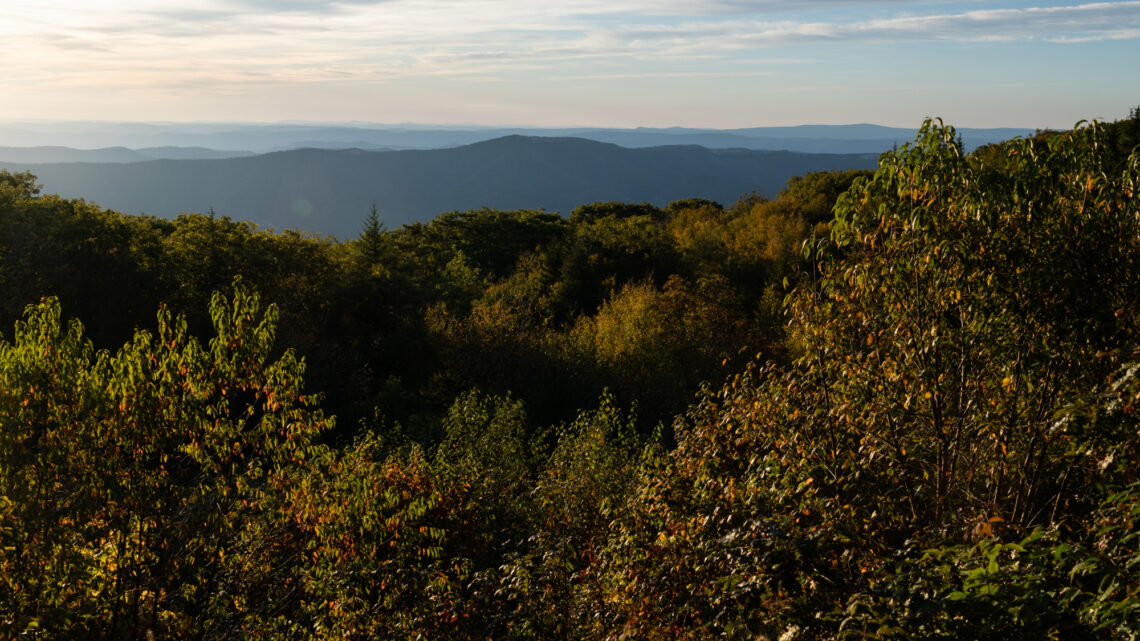Forests

Forests provide benefits to wildlife and people. Forested habitats provide food, water, and shelter to a variety of wildlife including plants, animals, and insects. Forests also help make surrounding habitats more healthy. Trees clean the air by trapping airborne pollutants and clean runoff by filtering and absorbing nutrients, sediment and chemical contaminants before these pollutants can flow to nearby waterways.
Forests are needed for a healthy watershed. Increasing development and invasive species are threatening this important habitat. Currently, the Chesapeake Bay watershed is losing 70 acres (almost 53 football fields!) of forest each day. Learn more about the benefits of trees in this video from the Chesapeake Bay Program.
Connecting to Issue Investigation
The variety of environmental benefits a forest provides can make this solution relevant to many different investigations. For example, if during the course of an investigation or school audit, students see a need for protecting or improving wildlife habitat, cleaning runoff, cleaning the air, and providing shade then a forest can help! In addition, a school or nearby forest can provide a fascinating outdoor laboratory and location for outdoor learning across many disciplines.
For those working towards green school awards, this action can reduce a school’s environmental impact if the forest is located on school grounds.
Facilitating Student Action
Students should continue to have opportunities to share ideas and opinions throughout the process of identifying, planning, and implementing action. Listed here are just a few ways students can stay engaged while working on this solution—but there are many more! The complexity of each activity/task can be adjusted for each grade level.
Protect - students can educate others on why forests should be protected. Younger students can create simple scripts to deliver to decision makers and land owners and older students can create more involved presentations that include primary sources.
Restore - students can work on restoring a local forest or trees. Using age-appropriate resources, students can identify invasive plants, remove them, and suggest replacements to improve the habitat. Students can also care for the trees on their schoolyard by addressing any damage to the tree, adding fresh mulch to retain moisture, or adding deer protection.
Create - students can plant trees on the schoolyard or in the community. Depending on age, students can help with or lead the initial steps of determining which trees would thrive in a place by measuring the soil and precipitation. Students can research the components of a healthy forest and get involved with plant selection, habitat design, and installation.
Monitor - students can monitor a new or established forest. Students might observe new wildlife, plants, insects, and see overall positive changes to the habitat. Monitoring protocols will differ by age. Results and observations can be shared with others to encourage protection or inform restoration. Data sets can build up over years and students can track changes in the habitat.
Share and Celebrate - students can share their work with the school community by giving tours of a forest, giving presentations, creating displays, or writing and delivering morning announcements. Students can also write articles, press releases or invite reporters from the school paper and the local newspaper.
Forest Resources
U.S. Fish & Wildlife Service’s Schoolyard Habitat Project Guide is a comprehensive guide that walks you through the entire process of creating or restoring a schoolyard habitat or outdoor classroom space. The information is transferable to habitats outside schoolyards. See Appendix A of the guide for woodland-specific instructions. The guide also includes ideas for monitoring and sharing the forest.
Green Schoolyards America's Schoolyard Forest System focuses, as you'd expect, on the schoolyard! Check out their resource to learn tips for making the case for schoolyard trees, to designing, implementing and maintaining those trees. Under Educator Resources they also include a variety of lessons that incorporate your schoolyard trees.
i-Tree offers a variety of tools to help students understand the benefits trees provide for our environment and communities. i-Tree MyTree is a great tool to start with; students can select a local tree, like one on their schoolyard, and estimate the amount of carbon dioxide and pollution removed from the air and the amount of stormwater mitigated by that single tree.
There are many local tree planting organizations and local or statewide tree planting initiatives across the region. Before purchasing, planting, or maintaining trees, ask around. There may be experts ready to help!
